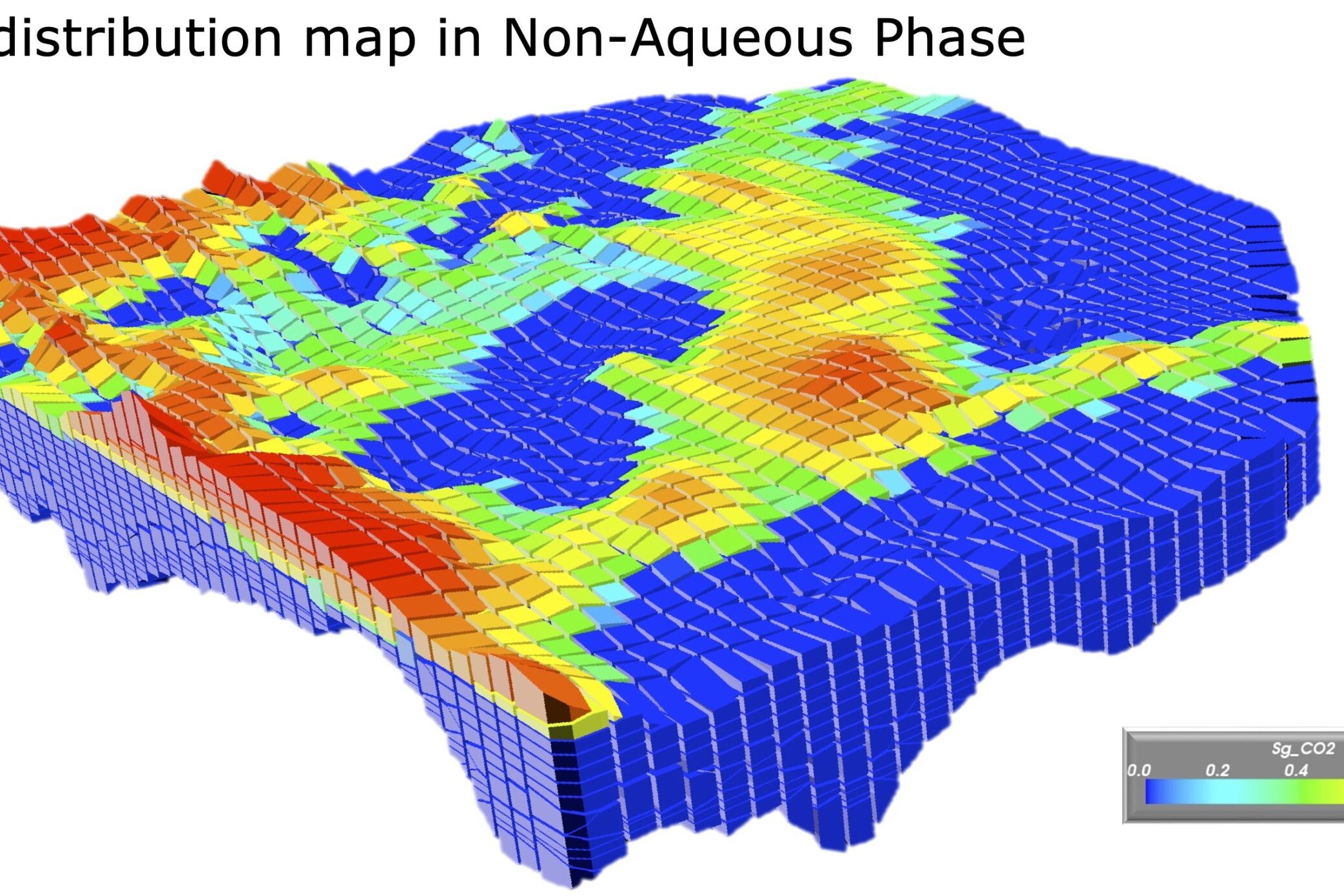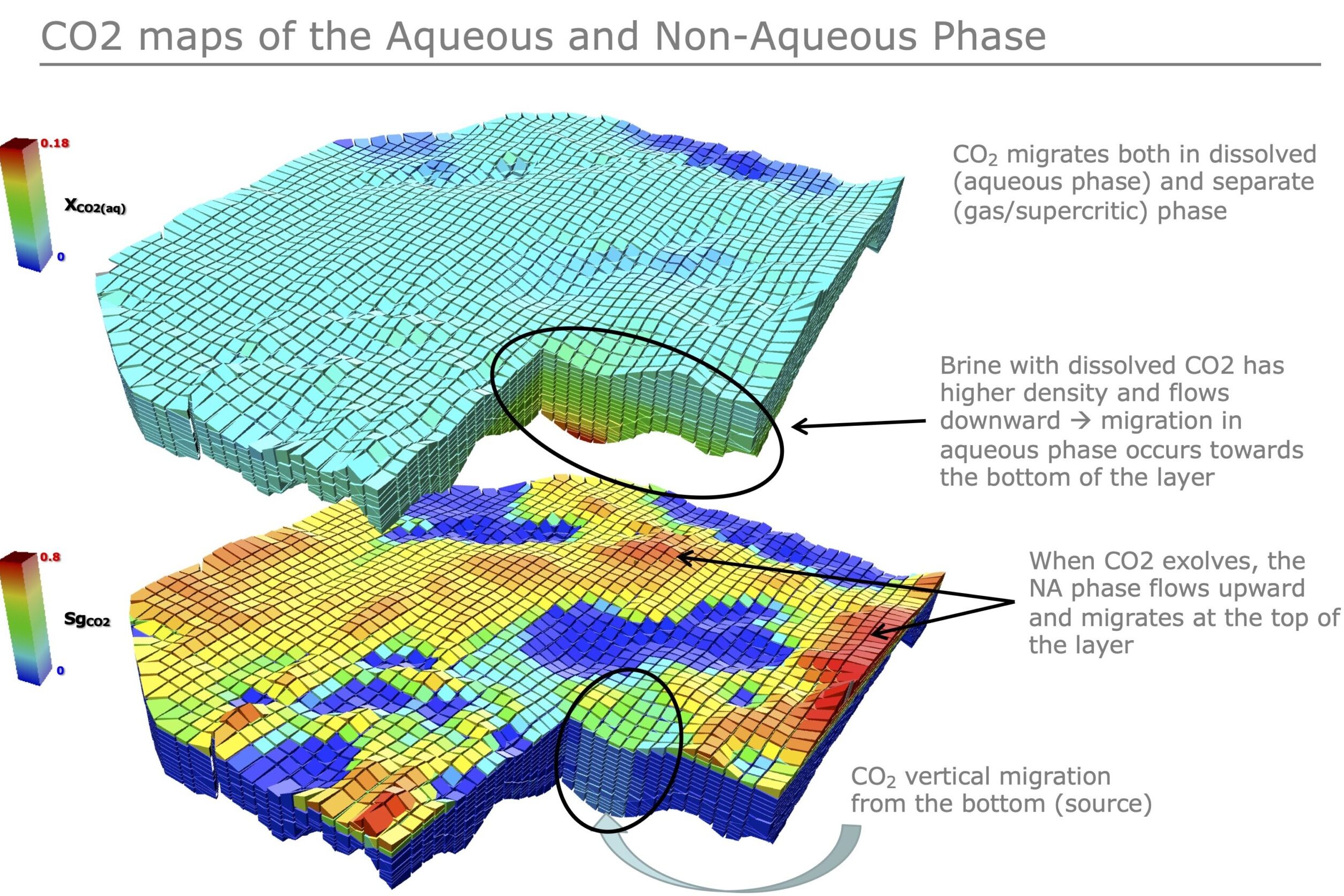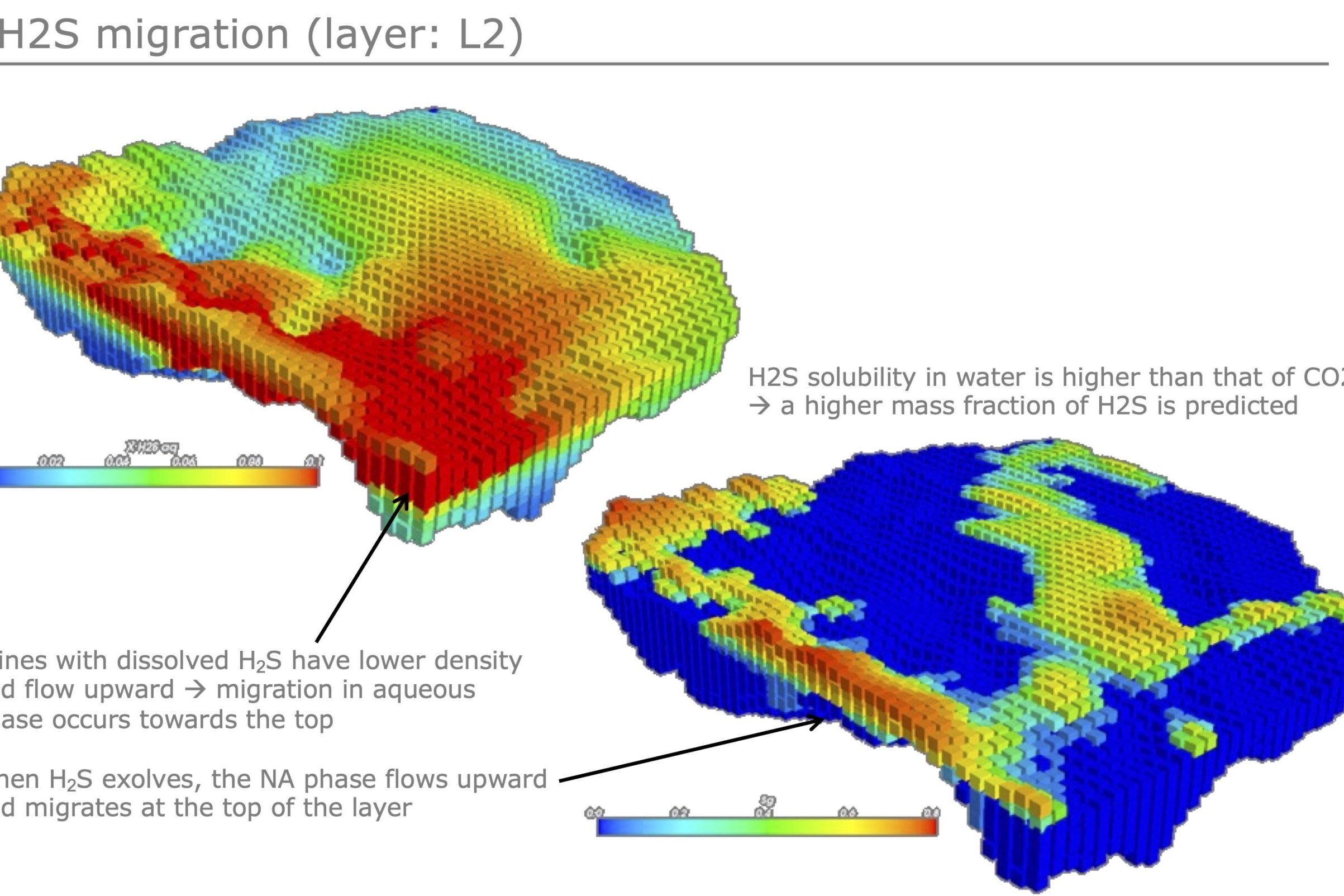- Start date: 2014
- End date: 2017
- Funded by: Eni S.p.A
- Topic: Identification of a modeling strategy and structure of effective models for the simulation of key processes governing generation and migration of non-hydrocarbon components (H2S/CO2) in sedimentary basins.
We consider modeling of non-hydrocarbon components by Thermochemical Sulphate Reduction (TSR). The TSR is a complex geochemical process, which lead to the reaction of hydrocarbon components with dissolved sulphate ions. Among the products generated by the reaction we find H2S and sometimes CO2. A detailed review of approached recently developed in the literature to tackle the modeling of this complex process is presented in Porta et al. (2016). The key critical points emerging from previous studies are that (i) TSR is an irreversible reactive process, (ii) experimental data to characterize TSR kinetics at temperatures relevant to basin scale scenarios are lacking, (iii) field evidence and numerical studies suggest that the availability of reactants at the reaction front can be limited by diffusion. We provide a detailed study of the kinetics of TSR, upon relying on various assumptions. Our key target is to quantify the characteristic time related to the process. To this end, we employ three different assumptions:
- Model 1: Batch reactor with kinetically-controlled anhydrite dissolution (surface reaction controlled)
- Model 2: Batch reactor with diffusion-controlled anhydrite dissolution (diffusion controlled)
- Model 3: Diffusion-limited TSR, where the reaction limiting process is the transport of aqueous methane towards anhydrite (shrinking core model, SCM).




